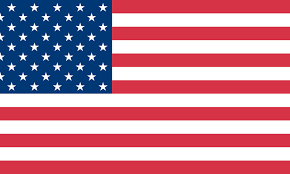How to Create Nutrition Fact Labels?

Confused about nutrition labels for your small food business? You're not alone. With the growing consumer demand for transparency, having accurate and compliant labels is crucial. Clear nutrition labels build trust with your customers and can be a powerful marketing tool. They help you stand out from the competition and showcase the health benefits of your products.
In this guide, we'll break down the process of creating nutrition labels for your small business. We'll cover everything you need to know, from understanding serving sizes to ensuring compliance with FDA regulations. By the end, you'll be confident in creating labels that inform your customers and empower your business.
Understanding Nutrition Fact Labels
A Nutrition Fact Label offers vital data on the nutritional content of packaged food and beverages. Required by the FDA for all packaged foods produced domestically or imported, these labels serve several key functions:
The Nutrition Fact Label is important for several reasons:
- Comparison: Nutrition fact labels allow consumers to compare the nutritional content of different products and make healthier choices.
- Serving Size Awareness: The label includes the serving size and the number of servings per container. This helps consumers understand how much of the product they are consuming and how it contributes to their overall nutrient intake.
- Nutrient Monitoring: The label provides information about specific nutrients that may be of concern. his allows individuals to monitor their intake of these nutrients and make choices that align with their dietary needs and goals.
- Dietary Management: The label can help individuals track their intake of key nutrients and compare it to their recommended daily allowances. This is particularly important for individuals with specific dietary requirements or health conditions.
A Guide to Make Nutrition Fact Label
Follow these steps to ensure your own nutrition labels are accurate and compliant with regulatory standards:
Step 1: Gather Information
The foundation of creating nutrition fact labels lies in gathering accurate and reliable information.
You should start the process by reviewing the guidelines provided by the Food and Drug Administration (FDA). These guidelines will help you to determine the appropriate serving sizes for your product. This step is crucial as it sets the standard for the rest of the label creation process.
Next, research the nutritional information for each ingredient used in your recipe. Utilize reputable sources such as the USDA National Nutrient Database to ensure the accuracy of your data.

Important Consideration
It may be necessary to obtain nutritional values from a specialized lab for complex items like fried or coated foods. This practice will ensure precision for complex items like fried or coated foods.
Step 2: Calculate Nutrients per Serving
Accurate measurements are paramount in this step.
Measure Precisely: Utilize kitchen scales or measuring cups to accurately measure the quantities of each ingredient in your recipe. This precision is vital for reliable nutritional calculations.
Determine Serving Size: Establish a serving size that aligns with similar products available on the market. This helps consumers understand how your product compares with others they might consume.
Calculate Nutritional Content: Once you have precise measurements, multiply the nutrient values from your data sources by the amount of each ingredient to calculate the nutrition per serving.
Step 3: Summarize Your Findings
This step involves consolidating your calculated nutrient values and ensuring compliance with local regulations.
Consolidate Nutrient Data: Add up the nutrient values for each component to give a complete picture of what your product contains.
Ensure Regulatory Compliance: Identify all nutrients that are mandatory to list according to local regulations. These typically include:
- Total Calories
- Fats
- Cholesterol
- Sodium
- Carbohydrates (including dietary fiber and sugars)
- Protein
- Vitamins and minerals
Format the Presentation: Make sure that these nutrients are presented in compliance with regulatory requirements, which specify the order and units of measurement. The format should be consistent and clear, enhancing readability and understanding.

Step 4: Calculate Percent Daily Values (%DV)
Understanding and conveying Daily Values effectively is key:
Understand Daily Values: Recognize that DVs are based on a 2,000-calorie diet, and they represent an average level of nutrients needed per day. For example, if a food provides 5% DV of fat, it contributes 5% of the total daily fat intake recommended for a 2,000-calorie diet.
Perform Calculations: Calculate the %DV for each nutrient in your product. This helps consumers see how a serving of your product fits into their overall daily dietary needs. Provide context to these percentages where possible, explaining what they mean in practical terms.
Step 5: Format Your Label
The final step is crucial as it involves formatting the label to maximize clarity and accessibility.
Label Title: Use "Nutrition Information" as the heading to clearly denote the purpose of the label.
Serving Size and Calories: Display the serving size prominently at the top of the label, followed immediately by the total calories per serving. This offers consumers a quick insight into the energy content of the product.
List Key Nutrients: Include essential nutritional details such as total fat, cholesterol, sodium, carbohydrates (specifying amounts of fiber and sugars), and protein. This comprehensive listing helps consumers understand the nutritional makeup of the product.
%DV Information: Add the Percent Daily Values (%DV) for these nutrients, noting that individual dietary needs can vary. This information can help consumers gauge how a serving of the product fits into their daily nutritional requirements.

Step 6: Handle Allergens and Additional Claims
This step is about providing critical safety information and optional beneficial claims.
Allergen Declaration: Clearly list any common allergens contained in the product, such as nuts, dairy, or gluten, in the ingredient list. This is crucial for consumers with allergies or food sensitivities.
Voluntary Nutrients: You may choose to include additional nutrients that are not mandatory but could enhance the perceived value of your product (e.g., omega-3 fatty acids).
Health Claims: If you decide to make specific health claims like "low-fat" or "rich in antioxidants," ensure these statements are fully compliant with the regulations set by health authorities to avoid misleading consumers.
Disclaimer: Add a disclaimer stating that the nutritional information provided is an estimate, which may vary depending on the exact ingredients and preparation methods used. This notice helps set realistic expectations for consumers.
Additional Considerations for Nutrition Fact Labels
Get Help from a Nutritional Database
A nutritional database is a practical option for smaller businesses and individuals. It allows you to find specific nutrition facts by entering a particular ingredient and serving size.
These databases can host information on thousands of foods and ingredients. Most importantly, they are searchable by food item, group, or description. They may even provide a complete analysis of common ingredients. However, it is important to note that some items may still be unable to be analyzed.
Use an Online Nutrition Label Generator.
To streamline the creation of nutrition labels, consider using an online nutrition label generator. These platforms provide various templates that can be customized to meet the specific needs of your product. With an online generator, the process becomes as simple as inputting data into a predefined table, allowing for efficient design and customization of your labels.
Create Clear Prints of your Nutrition Label
The last step to make a nutrition label is printing. You must ensure to create clear and concise prints to deliver your product information. MUNBYN label printers can be your go-to option for printing nutrition labels without any hassle. There exist multiple thermal printer models in this category. You can easily explore and choose the one that suits your needs the best.

Munbyn thermal printers offer several features that make printing labels convenient and efficient. They can be connected wirelessly via Wi-Fi, eliminating the need for data cables. You can use MUNBYN 4x6 labels to make multiple nutrition labels without any restriction.
Final Thoughts
Creating accurate and informative nutrition fact labels is an essential part of the food packaging process. you can ensure to make nutrition label that complies with regulatory standards and provide consumers with valuable information by following these tips.

